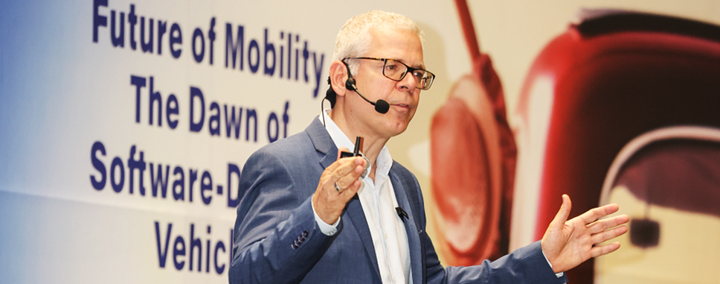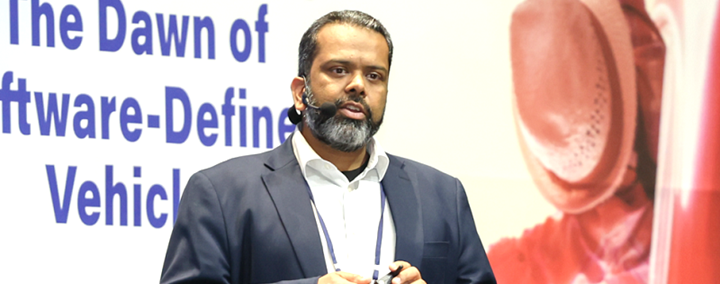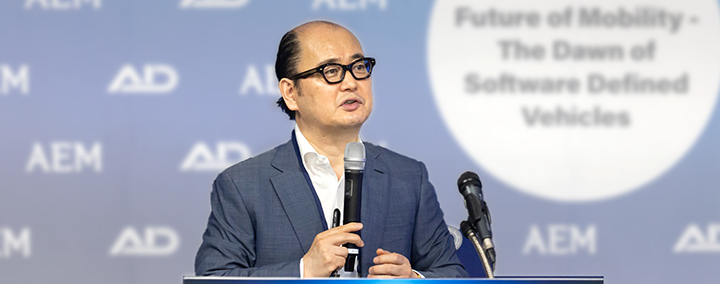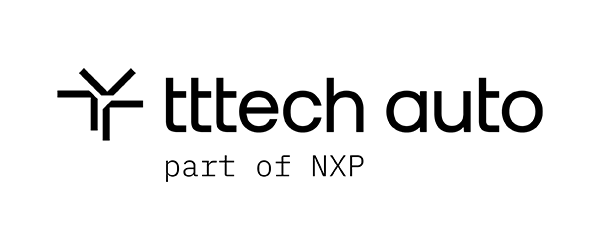AUTOMOTIVE INNOVATION DAY 2026
JULY 1, 2026 | Suwon Convention Center, Gyeonggi-do, Republic of KOREA
Held annually in Korea, AID serves as a platform where the automotive industry’s leading minds, cutting-edge innovators, and forward-thinking companies
come together to share insights, showcase breakthroughs, and explore the transition toward software-defined and intelligent vehicles.
From software-defined architectures and autonomous driving to smart cockpit technologies and vehicle electrification, AID covers every critical aspect shaping the evolution of next-generation mobility.

“We are now in a transitional phase, moving from Software-Defined Vehicles to AI-Defined Vehicles. Rather than trying to solve everything at once, we should break problems down — bite by bite — within the context of multi-speed development and the current capabilities of AI infrastructure. To support this, we use the Engineering Lifecycle Capsules (ELCs), which captures key information such as requirements, context, and memory, helping us move forward step by step — together with AI.”

“The event made one thing crystal clear: the transition to Software-Defined Vehicles (SDVS) is not just coming - it’s already in full swing. In a fast-moving and dynamic market, SDV emerged as the central theme, drawing intense interest from across the industry. It was great to see how much attention our software solutions are receiving from our customers - a strong signal that we’re on the right path, delivering what customers truly need.”

“As vehicles shift from mechanical constructs to software-defined ecosystems, the real challenge isn’t just technical, it's systemic. Success in the SDV era demands new technology yes, but equally importantly new forms of collaboration, intelligent software sourcing, and agile ecosystems that break silos"

“As OEMs shift their sourcing strategies amid the EV and software-driven transformation, suppliers will see new opportunities. Growing system complexity and the rise of new players are driving greater integration within the supplier value chain. OEMs are expected to rely more on a few large system providers with scale and standardization advantages, while traditional suppliers face pressure from fierce competition and fast-paced consolidation."


































